Mingfei Sun
The University of Manchester
From Grunts to Grammar: Emergent Language from Cooperative Foraging
May 19, 2025Abstract:Early cavemen relied on gestures, vocalizations, and simple signals to coordinate, plan, avoid predators, and share resources. Today, humans collaborate using complex languages to achieve remarkable results. What drives this evolution in communication? How does language emerge, adapt, and become vital for teamwork? Understanding the origins of language remains a challenge. A leading hypothesis in linguistics and anthropology posits that language evolved to meet the ecological and social demands of early human cooperation. Language did not arise in isolation, but through shared survival goals. Inspired by this view, we investigate the emergence of language in multi-agent Foraging Games. These environments are designed to reflect the cognitive and ecological constraints believed to have influenced the evolution of communication. Agents operate in a shared grid world with only partial knowledge about other agents and the environment, and must coordinate to complete games like picking up high-value targets or executing temporally ordered actions. Using end-to-end deep reinforcement learning, agents learn both actions and communication strategies from scratch. We find that agents develop communication protocols with hallmark features of natural language: arbitrariness, interchangeability, displacement, cultural transmission, and compositionality. We quantify each property and analyze how different factors, such as population size and temporal dependencies, shape specific aspects of the emergent language. Our framework serves as a platform for studying how language can evolve from partial observability, temporal reasoning, and cooperative goals in embodied multi-agent settings. We will release all data, code, and models publicly.
Reinforcement Learning (RL) Meets Urban Climate Modeling: Investigating the Efficacy and Impacts of RL-Based HVAC Control
May 11, 2025Abstract:Reinforcement learning (RL)-based heating, ventilation, and air conditioning (HVAC) control has emerged as a promising technology for reducing building energy consumption while maintaining indoor thermal comfort. However, the efficacy of such strategies is influenced by the background climate and their implementation may potentially alter both the indoor climate and local urban climate. This study proposes an integrated framework combining RL with an urban climate model that incorporates a building energy model, aiming to evaluate the efficacy of RL-based HVAC control across different background climates, impacts of RL strategies on indoor climate and local urban climate, and the transferability of RL strategies across cities. Our findings reveal that the reward (defined as a weighted combination of energy consumption and thermal comfort) and the impacts of RL strategies on indoor climate and local urban climate exhibit marked variability across cities with different background climates. The sensitivity of reward weights and the transferability of RL strategies are also strongly influenced by the background climate. Cities in hot climates tend to achieve higher rewards across most reward weight configurations that balance energy consumption and thermal comfort, and those cities with more varying atmospheric temperatures demonstrate greater RL strategy transferability. These findings underscore the importance of thoroughly evaluating RL-based HVAC control strategies in diverse climatic contexts. This study also provides a new insight that city-to-city learning will potentially aid the deployment of RL-based HVAC control.
Low-Rank Agent-Specific Adaptation (LoRASA) for Multi-Agent Policy Learning
Feb 08, 2025Abstract:Multi-agent reinforcement learning (MARL) often relies on \emph{parameter sharing (PS)} to scale efficiently. However, purely shared policies can stifle each agent's unique specialization, reducing overall performance in heterogeneous environments. We propose \textbf{Low-Rank Agent-Specific Adaptation (LoRASA)}, a novel approach that treats each agent's policy as a specialized ``task'' fine-tuned from a shared backbone. Drawing inspiration from parameter-efficient transfer methods, LoRASA appends small, low-rank adaptation matrices to each layer of the shared policy, naturally inducing \emph{parameter-space sparsity} that promotes both specialization and scalability. We evaluate LoRASA on challenging benchmarks including the StarCraft Multi-Agent Challenge (SMAC) and Multi-Agent MuJoCo (MAMuJoCo), implementing it atop widely used algorithms such as MAPPO and A2PO. Across diverse tasks, LoRASA matches or outperforms existing baselines \emph{while reducing memory and computational overhead}. Ablation studies on adapter rank, placement, and timing validate the method's flexibility and efficiency. Our results suggest LoRASA's potential to establish a new norm for MARL policy parameterization: combining a shared foundation for coordination with low-rank agent-specific refinements for individual specialization.
$TAR^2$: Temporal-Agent Reward Redistribution for Optimal Policy Preservation in Multi-Agent Reinforcement Learning
Feb 07, 2025Abstract:In cooperative multi-agent reinforcement learning (MARL), learning effective policies is challenging when global rewards are sparse and delayed. This difficulty arises from the need to assign credit across both agents and time steps, a problem that existing methods often fail to address in episodic, long-horizon tasks. We propose Temporal-Agent Reward Redistribution $TAR^2$, a novel approach that decomposes sparse global rewards into agent-specific, time-step-specific components, thereby providing more frequent and accurate feedback for policy learning. Theoretically, we show that $TAR^2$ (i) aligns with potential-based reward shaping, preserving the same optimal policies as the original environment, and (ii) maintains policy gradient update directions identical to those under the original sparse reward, ensuring unbiased credit signals. Empirical results on two challenging benchmarks, SMACLite and Google Research Football, demonstrate that $TAR^2$ significantly stabilizes and accelerates convergence, outperforming strong baselines like AREL and STAS in both learning speed and final performance. These findings establish $TAR^2$ as a principled and practical solution for agent-temporal credit assignment in sparse-reward multi-agent systems.
Agent-Temporal Credit Assignment for Optimal Policy Preservation in Sparse Multi-Agent Reinforcement Learning
Dec 19, 2024Abstract:In multi-agent environments, agents often struggle to learn optimal policies due to sparse or delayed global rewards, particularly in long-horizon tasks where it is challenging to evaluate actions at intermediate time steps. We introduce Temporal-Agent Reward Redistribution (TAR$^2$), a novel approach designed to address the agent-temporal credit assignment problem by redistributing sparse rewards both temporally and across agents. TAR$^2$ decomposes sparse global rewards into time-step-specific rewards and calculates agent-specific contributions to these rewards. We theoretically prove that TAR$^2$ is equivalent to potential-based reward shaping, ensuring that the optimal policy remains unchanged. Empirical results demonstrate that TAR$^2$ stabilizes and accelerates the learning process. Additionally, we show that when TAR$^2$ is integrated with single-agent reinforcement learning algorithms, it performs as well as or better than traditional multi-agent reinforcement learning methods.
LoKO: Low-Rank Kalman Optimizer for Online Fine-Tuning of Large Models
Oct 15, 2024Abstract:Training large models with millions or even billions of parameters from scratch incurs substantial computational costs. Parameter Efficient Fine-Tuning (PEFT) methods, particularly Low-Rank Adaptation (LoRA), address this challenge by adapting only a reduced number of parameters to specific tasks with gradient-based optimizers. In this paper, we cast PEFT as an optimal filtering/state estimation problem and present Low-Rank Kalman Optimizer (LoKO) to estimate the optimal trainable parameters in an online manner. We leverage the low-rank decomposition in LoRA to significantly reduce matrix sizes in Kalman iterations and further capitalize on a diagonal approximation of the covariance matrix to effectively decrease computational complexity from quadratic to linear in the number of trainable parameters. Moreover, we discovered that the initialization of the covariance matrix within the Kalman algorithm and the accurate estimation of the observation noise covariance are the keys in this formulation, and we propose robust approaches that work well across a vast range of well-established computer vision and language models. Our results show that LoKO converges with fewer iterations and yields better performance models compared to commonly used optimizers with LoRA in both image classifications and language tasks. Our study opens up the possibility of leveraging the Kalman filter as an effective optimizer for the online fine-tuning of large models.
DroneDiffusion: Robust Quadrotor Dynamics Learning with Diffusion Models
Sep 17, 2024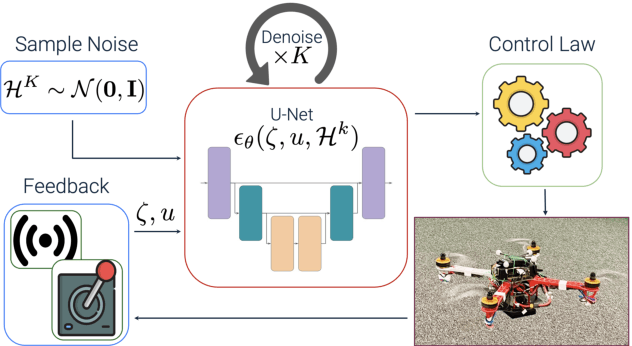
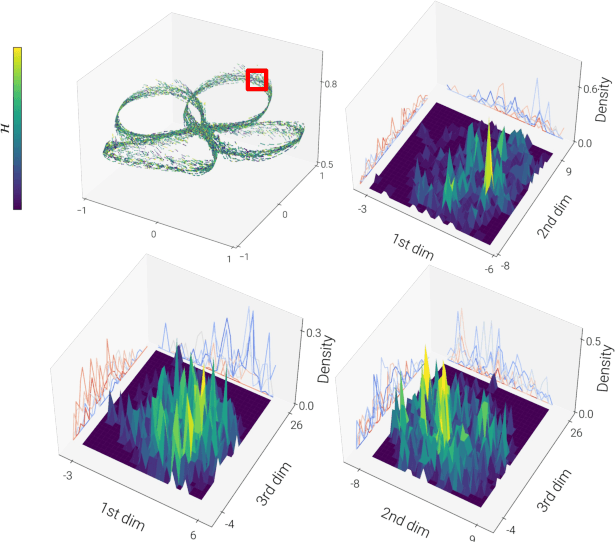
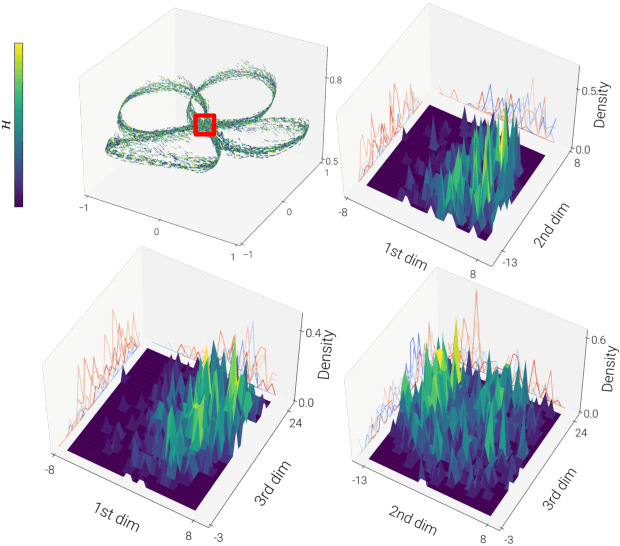
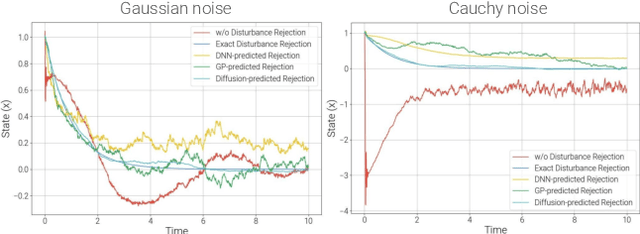
Abstract:An inherent fragility of quadrotor systems stems from model inaccuracies and external disturbances. These factors hinder performance and compromise the stability of the system, making precise control challenging. Existing model-based approaches either make deterministic assumptions, utilize Gaussian-based representations of uncertainty, or rely on nominal models, all of which often fall short in capturing the complex, multimodal nature of real-world dynamics. This work introduces DroneDiffusion, a novel framework that leverages conditional diffusion models to learn quadrotor dynamics, formulated as a sequence generation task. DroneDiffusion achieves superior generalization to unseen, complex scenarios by capturing the temporal nature of uncertainties and mitigating error propagation. We integrate the learned dynamics with an adaptive controller for trajectory tracking with stability guarantees. Extensive experiments in both simulation and real-world flights demonstrate the robustness of the framework across a range of scenarios, including unfamiliar flight paths and varying payloads, velocities, and wind disturbances.
Effective Generation of Feasible Solutions for Integer Programming via Guided Diffusion
Jun 18, 2024

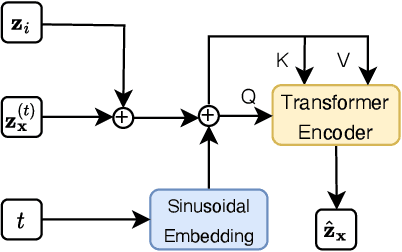

Abstract:Feasible solutions are crucial for Integer Programming (IP) since they can substantially speed up the solving process. In many applications, similar IP instances often exhibit similar structures and shared solution distributions, which can be potentially modeled by deep learning methods. Unfortunately, existing deep-learning-based algorithms, such as Neural Diving and Predict-and-search framework, are limited to generating only partial feasible solutions, and they must rely on solvers like SCIP and Gurobi to complete the solutions for a given IP problem. In this paper, we propose a novel framework that generates complete feasible solutions end-to-end. Our framework leverages contrastive learning to characterize the relationship between IP instances and solutions, and learns latent embeddings for both IP instances and their solutions. Further, the framework employs diffusion models to learn the distribution of solution embeddings conditioned on IP representations, with a dedicated guided sampling strategy that accounts for both constraints and objectives. We empirically evaluate our framework on four typical datasets of IP problems, and show that it effectively generates complete feasible solutions with a high probability (> 89.7 \%) without the reliance of Solvers and the quality of solutions is comparable to the best heuristic solutions from Gurobi. Furthermore, by integrating our method's sampled partial solutions with the CompleteSol heuristic from SCIP, the resulting feasible solutions outperform those from state-of-the-art methods across all datasets, exhibiting a 3.7 to 33.7\% improvement in the gap to optimal values, and maintaining a feasible ratio of over 99.7\% for all datasets.
TTA-Nav: Test-time Adaptive Reconstruction for Point-Goal Navigation under Visual Corruptions
Mar 14, 2024Abstract:Robot navigation under visual corruption presents a formidable challenge. To address this, we propose a Test-time Adaptation (TTA) method, named as TTA-Nav, for point-goal navigation under visual corruptions. Our "plug-and-play" method incorporates a top-down decoder to a pre-trained navigation model. Firstly, the pre-trained navigation model gets a corrupted image and extracts features. Secondly, the top-down decoder produces the reconstruction given the high-level features extracted by the pre-trained model. Then, it feeds the reconstruction of a corrupted image back to the pre-trained model. Finally, the pre-trained model does forward pass again to output action. Despite being trained solely on clean images, the top-down decoder can reconstruct cleaner images from corrupted ones without the need for gradient-based adaptation. The pre-trained navigation model with our top-down decoder significantly enhances navigation performance across almost all visual corruptions in our benchmarks. Our method improves the success rate of point-goal navigation from the state-of-the-art result of 46% to 94% on the most severe corruption. This suggests its potential for broader application in robotic visual navigation. Project page: https://sites.google.com/view/tta-nav
FARPLS: A Feature-Augmented Robot Trajectory Preference Labeling System to Assist Human Labelers' Preference Elicitation
Mar 10, 2024Abstract:Preference-based learning aims to align robot task objectives with human values. One of the most common methods to infer human preferences is by pairwise comparisons of robot task trajectories. Traditional comparison-based preference labeling systems seldom support labelers to digest and identify critical differences between complex trajectories recorded in videos. Our formative study (N = 12) suggests that individuals may overlook non-salient task features and establish biased preference criteria during their preference elicitation process because of partial observations. In addition, they may experience mental fatigue when given many pairs to compare, causing their label quality to deteriorate. To mitigate these issues, we propose FARPLS, a Feature-Augmented Robot trajectory Preference Labeling System. FARPLS highlights potential outliers in a wide variety of task features that matter to humans and extracts the corresponding video keyframes for easy review and comparison. It also dynamically adjusts the labeling order according to users' familiarities, difficulties of the trajectory pair, and level of disagreements. At the same time, the system monitors labelers' consistency and provides feedback on labeling progress to keep labelers engaged. A between-subjects study (N = 42, 105 pairs of robot pick-and-place trajectories per person) shows that FARPLS can help users establish preference criteria more easily and notice more relevant details in the presented trajectories than the conventional interface. FARPLS also improves labeling consistency and engagement, mitigating challenges in preference elicitation without raising cognitive loads significantly
 Add to Chrome
Add to Chrome Add to Firefox
Add to Firefox Add to Edge
Add to Edge